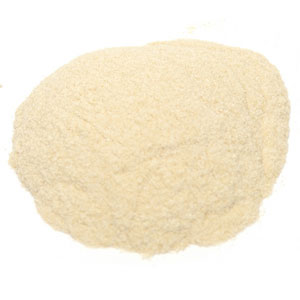Cookbook:Pectin
| Pectin | |
|---|---|
 |
Cookbook | Recipes | Ingredients
Pectin is a polysaccharide substance extracted from plants, and it is commonly used as a gelling agent to thicken foods. It can be made from apples.
Types[edit | edit source]
Pectin comes in different varieties, which are used in different cooking applications. It is important to select the correct kind of pectin for your specific use.
High methoxyl (HM) pectin[edit | edit source]
HM pectin requires sugar and acid in order to gel. It can come in "rapid-set" or "slow-set" types. Rapid-set requires higher heat and less time to set, and it is good for jams and preserves with pieces in suspension. Slow-set requires lower heat and more time, and it is good for clear jellies. HM pectin may also be sold as "yellow pectin", "fruit pectin", or "apple pectin".
Low methoxyl (LM) pectin[edit | edit source]
Sometimes called universal pectin, LM pectin requires calcium to gel. The gel firmness increases with the amount of calcium until it is saturated; after this point it will reverse. Because it does not require sugar to gel, LM pectin can be used for sugar-free jams and jellies.
Pectin NH[edit | edit source]
Pectin NH is a kind of modified LM pectin that is thermally reversible—it can be remelted and set repeatedly. It is typically sold premixed with calcium, so no additional calcium must be added to the recipe.
Uses[edit | edit source]
Jams, jellies, and preserves will not set unless they have enough pectin in them, so it is often added as an extra ingredient in the form of products such as 'jamsetta'. It is often used as a replacement for gelatin in vegetarian cuisine, alongside carrageenan.